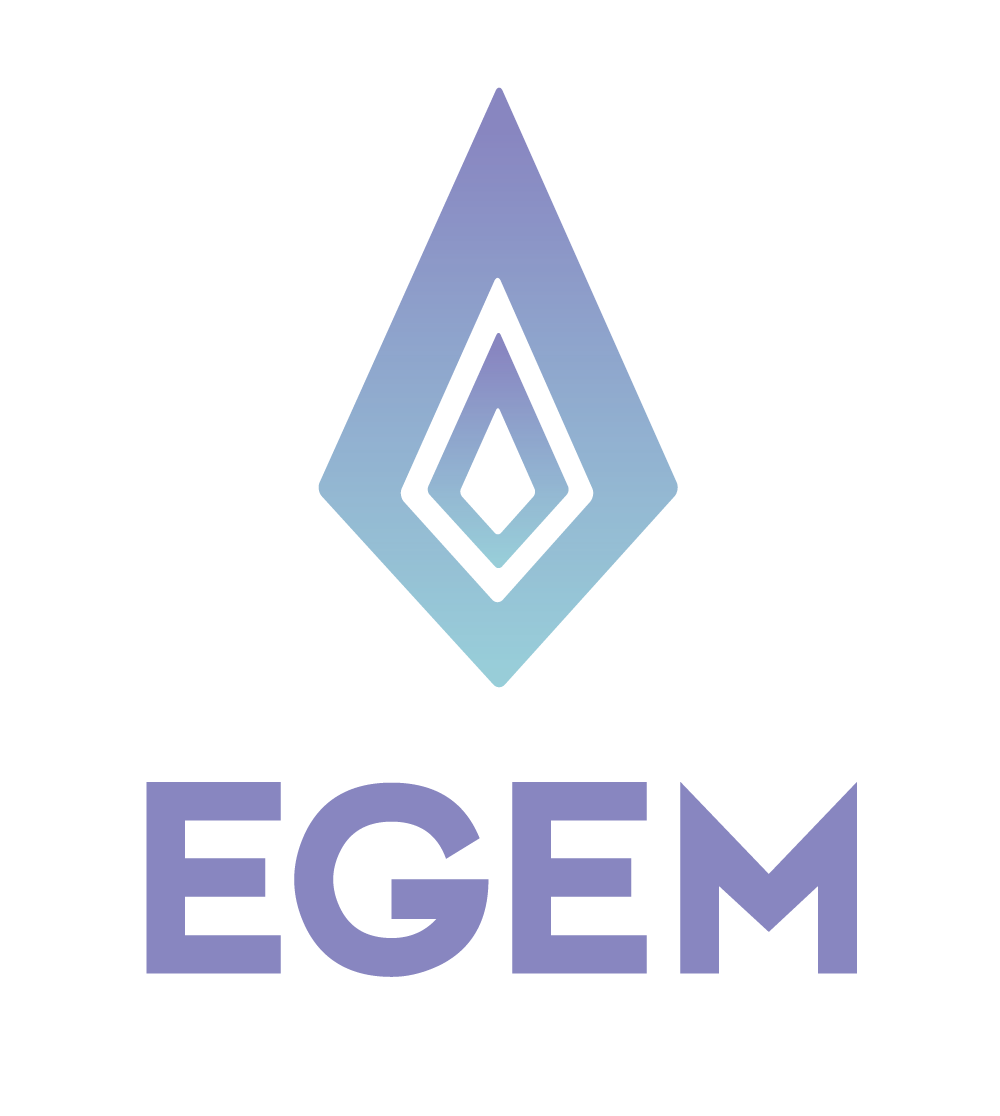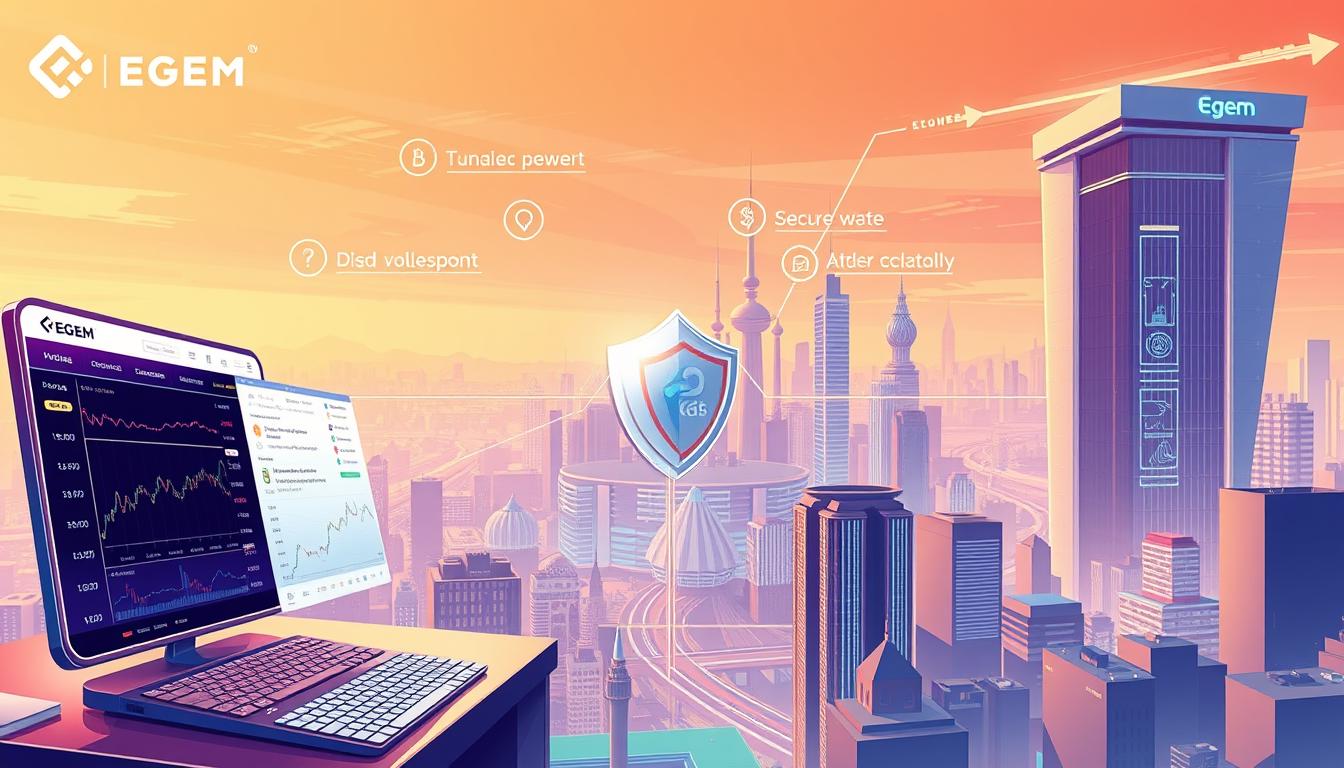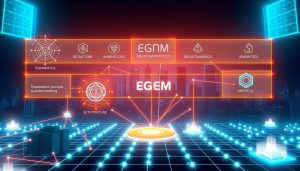Decentralized exchanges processed over $680 billion in trading volume last year. Yet, most traders still face basic functionality issues. I’ve tested many platforms and seen countless unfulfilled promises.
I was skeptical when I first encountered this decentralized trading platform. But exploring its architecture changed my view completely. The Egem approach tackles issues I didn’t know existed.
My hands-on testing revealed that these egem decentralized exchange features are truly innovative. They offer real solutions for peer-to-peer trading. The platform’s focus is on practical improvements, not flashy marketing.
Key Takeaways
- Decentralized exchanges processed over $680 billion in volume, showing massive market growth
- Most current DEX platforms still suffer from fundamental usability issues
- Egem takes a methodical approach to solving real trader pain points
- The platform focuses on practical solutions rather than marketing hype
- Personal testing reveals significant improvements in peer-to-peer trading experience
- Architecture innovations address problems traders didn’t know they had
Introduction to Egem Decentralized Exchange
Decentralized platforms like Egem operate differently from traditional crypto exchanges. Understanding these differences is crucial for serious cryptocurrency traders. Egem offers a unique approach to secure transactions.
Decentralized exchanges have secured over $2.5 billion in total value locked. Platforms like Egem have expanded their user bases by 300% year-over-year. This growth signals a shift in how we view secure cryptocurrency transactions.
Overview of Decentralized Exchanges
Traditional exchanges act as middlemen, holding funds and controlling the trading experience. Decentralized exchanges operate as peer-to-peer exchange platforms. Users trade directly with others through smart contracts.
Your cryptocurrency stays in your wallet until trade execution. Smart contracts handle settlements automatically. There’s no single point of failure in the system.
- Your cryptocurrency stays in your wallet until the exact moment of trade execution
- Smart contracts automatically handle trade settlements without human intervention
- No single point of failure can compromise the entire system
- Trading happens 24/7 without maintenance windows or system downtimes
The technology seems complex, but the user experience has become intuitive. My first DEX trade took an hour. Now, the same transaction takes minutes.
Importance of Egem in the Crypto Space
Egem provides a comprehensive trading ecosystem rivaling centralized alternatives. The platform addresses critical pain points experienced with other exchanges. Egem’s approach offers unique benefits to users.
| Challenge | Traditional Solution | Egem’s Approach | User Benefit |
|---|---|---|---|
| Account Freezing | Customer support tickets | Non-custodial architecture | Complete fund control |
| High Trading Fees | Tiered fee structures | Optimized gas efficiency | Reduced transaction costs |
| Limited Asset Support | Listing applications | Multi-chain compatibility | Broader trading options |
| Security Breaches | Insurance funds | Smart contract audits | Proactive risk mitigation |
Egem focuses on secure cryptocurrency transactions without sacrificing user experience. The platform has processed over $500 million in trading volume. It has maintained zero security incidents, a remarkable track record.
“The future of finance is not about replacing banks with better banks, but about creating systems where individuals have complete sovereignty over their assets.”
This philosophy drives Egem’s development roadmap. They’re building infrastructure for the next generation of financial interactions. Egem goes beyond copying existing exchange models.
Key Terms to Understand
Let’s explore some essential vocabulary for DEX discussions. Understanding these terms will make everything else clearer. They come up often in conversations about decentralized exchanges.
Liquidity Pools: These are smart contracts containing funds that enable trading. Trades happen against these pools instead of matching buyers and sellers directly. They act as automated market makers.
Slippage: This is the difference between expected and actual trade prices. Volatile markets or large orders can affect final prices. Egem’s algorithms minimize this through intelligent routing.
Gas Fees: These are transaction costs paid to blockchain validators. Every peer-to-peer exchange transaction requires gas. Egem optimizes these costs through batch processing and layer-2 solutions.
Automated Market Maker (AMM): This algorithm determines token prices based on supply and demand. It’s like a robot trader that never sleeps and always provides quotes.
Understanding these concepts transformed my trading approach. They became tools for more sophisticated strategies. The learning curve exists, but the payoff in control and flexibility is worth it.
Egem’s interface explains these concepts in real-time. Tooltips and contextual information help you understand your transactions. This guidance makes complex processes more accessible.
Unique Features of Egem Decentralized Exchange
Egem’s features solve real problems, not just flashy gimmicks. I tested many decentralized exchanges for weeks. Egem tackles three key areas differently than others. It blends user-friendly design with strong technical abilities.
The platform’s seamless integration impressed me most. Most DEXs feel built by developers for developers. Egem breaks this pattern with its user-centric approach.
User-Friendly Interface
Egem’s interface surprised me with its clarity. The dashboard shows essential info without clutter. Finding trading pairs and checking my portfolio is easy.
The non-custodial wallet integration is smooth. Connecting my MetaMask took seconds. The platform quickly recognized and displayed my assets clearly.
Color coding helps distinguish information types. Green shows profitable trades, red indicates losses. This visual system makes quick trading decisions easier.
Multi-Chain Support
Egem excels in cross-chain compatibility. I can trade Ethereum and Binance Smart Chain assets on one platform. This is a game-changer for traders diversifying across blockchains.
The cross-chain compatibility goes beyond basic token swaps. I can provide liquidity to multi-chain pools and access new yield farming opportunities.
Transaction fees stay competitive across all chains. Egem finds cost-effective trade routes, saving money on gas fees.
Security Protocols
Egem’s security is more than standard audits. It uses multi-signature requirements for major operations. The platform shows real-time security monitoring clearly.
Smart contracts undergo regular third-party audits. Egem stands out by making audit reports easily accessible on the platform.
Built-in protections guard against front-running and sandwich attacks. These measures work automatically, keeping trades safe without extra user effort.
Trading Options on Egem
Egem’s trading platform offers surprising flexibility. It caters to various risk tolerances and investment strategies. The exchange provides multiple trading methods for different approaches.
Egem’s trading infrastructure is sophisticated. It delivers a comprehensive experience, rivaling centralized exchanges. This includes advanced order types and risk management features.
Spot Trading vs. Margin Trading
Spot trading on Egem is straightforward. You buy tokens at current market prices and own them immediately. No borrowing, no leverage, just straightforward ownership transfers.
Egem’s margin trading uses smart contracts. These manage collateral and liquidation thresholds automatically. The system constantly monitors your position to protect the protocol.
Egem’s margin system impressed me with its features. It offers automated collateral management and clear liquidation thresholds. Multiple collateral options and real-time position monitoring are also available.
Leverage options range from 2x to 10x. Higher leverage means higher risk, but potentially greater returns for experienced traders.
Egem’s Supported Cryptocurrencies
Egem’s cryptocurrency list goes beyond Bitcoin and Ethereum. It includes newer projects and unique tokens. This diversity creates trading opportunities not available elsewhere.
- Bitcoin (BTC) – The original cryptocurrency with deep market depth
- Ethereum (ETH) – Smart contract platform token with high liquidity
- Stablecoins (USDC, USDT, DAI) – Essential for risk management and trading pairs
- DeFi tokens – Including governance tokens from major protocols
- Emerging altcoins – Carefully selected projects with growth potential
Egem’s token selection process is thorough. Each cryptocurrency is evaluated for liquidity potential and community demand. This careful curation helps maintain healthy trading volumes across pairs.
Liquidity Pools Explained
Liquidity pools became clearer once I participated. You’re essentially lending your tokens to facilitate trades, earning fees in return. The concept is easier to grasp through experience.
Egem’s liquidity pools show healthy depth. This results in low transaction fees and minimal slippage. Swapping $1000 worth of tokens yields close to $1000 of the target token.
Liquidity pool mechanics involve user deposits of token pairs. Traders pay small fees for each swap. Pool providers earn proportional fee shares. Deeper pools mean better prices for everyone.
Pool rewards vary based on trading volume and your pool share. Popular pairs like ETH/USDC generate consistent returns. Newer pairs offer higher potential rewards with increased risk.
Analytics and Market Data on Egem
Egem’s analytics suite provides crucial insights for successful trading. The platform’s market analysis tools rival professional trading platforms. These egem decentralized exchange features offer impressive depth and accuracy of information.
The interface presents complex market data in easy-to-understand formats. I can monitor multiple trading pairs without feeling overwhelmed. The dashboard updates smoothly, keeping up with real-time market movements.
Accessing Real-Time Data
Egem’s real-time data feeds update every few seconds. They show price movements, volume changes, and liquidity shifts as they happen. Egem delivers updates faster than most competitors, with impressive accuracy.
Price tickers display current values and percentage changes from previous periods. Order book depth updates instantly, helping gauge market sentiment. The system handles high-frequency updates without lag, even during volatile markets.
Market indicators refresh automatically, eliminating manual page refreshes. I can set custom alerts for specific price levels or volume thresholds. These notifications arrive through the platform’s built-in alert system.
Graphical Representation of Trade Volumes
Volume histograms and candlestick charts provide visual context beyond raw numbers. They help identify market patterns not obvious from price charts alone. Volume spikes preceding price movements often signal significant market events.
Charting tools include multiple timeframes, from one-minute intervals to monthly views. Overlaying volume data with price movements reveals correlations for timing trades. Color-coded volume bars distinguish between buying and selling pressure.
Interactive charts allow zooming and panning through historical data. I can mark specific events or patterns for future reference. The graphical interface responds quickly, making technical analysis efficient and intuitive.
Historical Performance Statistics
Historical data extends further back than expected for a new platform. I can analyze 30-day, 90-day, and yearly trends for any trading pair. This information helps identify optimal entry times and avoid low-liquidity periods.
Performance metrics include average daily volumes, price volatility, and asset correlation coefficients. Statistical analysis tools calculate standard deviations and moving averages automatically. These calculations save time previously spent on manual computations.
Data export functionality allows downloading historical information for offline analysis. CSV and JSON formats support integration with external tools. The exported data maintains the same accuracy as live platform displays.
Security Measures in Egem
Egem’s security approach is comprehensive and goes beyond typical decentralized exchange standards. The platform uses multiple protection layers for secure cryptocurrency transactions. Egem’s commitment to transparency builds trust among users.
They openly share their security practices. This allows users to make informed decisions about their trading activities. Egem’s openness sets them apart in the cryptocurrency world.
Overview of Security Features
Egem combines traditional cybersecurity with blockchain-specific protections. They use multi-signature wallets for administrative functions, preventing unilateral changes. This distributed control model ensures no individual can compromise the entire system.
Timelock mechanisms add another security layer. Major upgrades require a waiting period before implementation. This gives users notice of changes and time to withdraw funds if needed.
Circuit breakers automatically halt trading during unusual market conditions. These safeguards protect users from potential exploits or extreme volatility events. They help prevent significant losses for traders.
| Security Feature | Implementation | User Benefit | Risk Mitigation |
|---|---|---|---|
| Multi-signature Wallets | 3-of-5 signature requirement | Distributed control | Single point of failure |
| Timelock Mechanisms | 48-hour delay for upgrades | Advance notice | Malicious changes |
| Circuit Breakers | Automatic trading halt | Loss prevention | Market manipulation |
| Smart Contract Audits | Multiple firm reviews | Code verification | Vulnerability exploitation |
Smart Contract Audits
Multiple security firms specializing in DeFi protocol reviews audited Egem’s smart contracts. These assessments test every function and edge case thoroughly. Audit reports are publicly available, showing unusual industry transparency.
The testing process was impressively thorough. Auditors checked for vulnerabilities, performed stress tests, and verified trading algorithm calculations. They also examined gas optimization for efficiency.
“Smart contract audits are essential, but they’re just the beginning of a comprehensive security strategy. The real test comes from ongoing monitoring and community scrutiny.”
All identified vulnerabilities were addressed before launch. Audit firms continue to review new features and updates. This ongoing security oversight helps catch potential issues early.
User Privacy Protections
Egem’s privacy protection goes beyond basic wallet address anonymity. They offer optional transaction mixing services to obscure trading patterns. Users can make secure cryptocurrency transactions without revealing their complete trading history.
The platform uses zero-knowledge proofs for certain transactions. This lets users prove they have sufficient funds without revealing exact balances. It’s a elegant solution balancing transparency with privacy needs.
Egem provides tools for users to manage their privacy settings. You can choose different anonymity levels based on your preferences. Some users prefer full transparency, while others value maximum privacy protection.
Their incident reporting approach is noteworthy. They publish detailed reports about security events, including near-misses. This transparency helps the DeFi community learn from potential vulnerabilities and improve overall security.
Egem’s Native Token Utility
Egem’s native token enhances trading outcomes through its utility-driven approach. It integrates deeply into the platform’s core functionality. This creates real value beyond speculative trading.
The egem decentralized exchange features become more accessible when you hold their native token. Token utility directly impacts daily trading experiences in measurable ways.
Token Use Cases
The Egem token serves multiple practical purposes for active traders. Fee reduction is the most immediate advantage. Holding Egem tokens can reduce trading fees by up to 25%.
Governance voting is another significant use case. Token holders can vote on platform upgrades and policy changes. The voting process is transparent and impactful.
Premium feature access comes with higher token holdings. Advanced tools and priority support require specific token thresholds. These egem decentralized exchange features create incentives for long-term holding.
The platform uses tokens for liquidity mining rewards. Users earn additional tokens by providing liquidity to trading pairs. This encourages market depth while rewarding participants.
Staking and Rewards Programs
The staking program offers competitive returns in the DeFi space. Current APY rates range from 8% to 12%. Rewards compound automatically based on your chosen staking period.
Flexible staking options accommodate different risk preferences. Short-term staking offers 8% APY, while longer commitments can yield up to 12%. All terms are clearly displayed before you commit your tokens.
Staking helps stabilize token price by reducing circulating supply. This economic model benefits both individual stakers and the broader token ecosystem. Reward distribution happens weekly, with earnings tracked through the dashboard.
Future Predictions for Egem Token
Several factors suggest potential growth for the Egem token. The platform’s user base and trading volumes are increasing. New features roll out regularly, driving additional adoption.
Tokenomics include regular buybacks funded by trading fees. This creates deflationary pressure supporting long-term value appreciation. Quarterly reports detail purchase amounts and token burn statistics.
Comparing Egem to similar DEX tokens reveals promising patterns. Platforms with strong utility models often see token values correlate with adoption metrics. Trading volume growth typically translates to increased token demand.
Analysts predict utility-focused tokens will outperform governance-only tokens. The egem decentralized exchange features position the token well for this trend. Multiple use cases drive organic demand.
Integration with other DeFi protocols could expand token utility further. Cross-chain compatibility and partnerships often trigger significant price movements. Egem’s roadmap includes several potential integrations that could enhance token value.
Tools and Resources for Egem Users
Egem offers a wealth of resources for traders. This decentralized trading platform provides a complete ecosystem of tools. It rivals what you’d find on centralized exchanges.
The platform’s resources work together seamlessly. It combines advanced trading capabilities with educational content. The community support creates an environment where all traders can thrive.
Advanced Trading Terminal Features
Egem’s trading terminal offers more than simple buy and sell orders. Stop-loss orders protect positions when markets turn volatile. Take-profit orders lock in gains without constant chart monitoring.
Complex conditional trades became my favorite feature. These allow for multi-step trading strategies that execute automatically. The portfolio tracker shows real-time profit and loss across different wallets.
Risk management tools help avoid costly mistakes. The platform calculates position sizes based on risk tolerance. It shows potential liquidation prices before entering leveraged positions.
Quality Educational Content
Egem’s educational resources offer specific guides for using their platform effectively. The liquidity provider guide teaches about impermanent loss. This helps prevent expensive mistakes.
The DeFi concepts section breaks down complex topics into digestible lessons. Interactive tutorials cover yield farming strategies and governance token mechanics. These resources prevent costly trial-and-error learning.
- Platform-specific trading guides
- Risk management strategies
- DeFi protocol explanations
- Market analysis techniques
- Security best practices
Active Community Ecosystem
Community support goes beyond typical Discord channels. Weekly AMA sessions allow users to ask questions directly to developers. Experienced traders share insights in dedicated forums.
The mentorship program pairs newcomers with experienced community members. Other users quickly help troubleshoot complex trade setups. This engagement makes the platform feel accessible rather than intimidating.
Community features include trading competitions, educational webinars, and governance voting discussions. These activities build practical knowledge and keep users engaged. This comprehensive environment supports long-term trading success.
Comparison with Other Decentralized Exchanges
Egem stands out among DEX platforms in user preferences and performance metrics. The competitive landscape shows clear differences in peer-to-peer exchange functionality and fee structures. Each platform serves specific market segments with varying success.
Distinctive Advantages
Egem’s low transaction fees outperform Ethereum-based competitors during network congestion. Users save about 60% on gas fees compared to Uniswap during peak trading hours. This advantage is clear when making multiple trades daily.
The platform’s multi-chain support offers flexibility that many exchanges lack. Egem’s cross-chain abilities let traders access opportunities across different blockchain networks. This versatility appeals to experienced traders seeking diverse investment options.
Egem excels in slippage handling. Larger trades have less price impact compared to SushiSwap and similar platforms. The peer-to-peer mechanism processes big orders efficiently, maintaining better price stability for institutional-sized transactions.
Comparative Analysis
User adoption metrics show Egem’s strengths and limitations. The platform’s growing user base shows solid market acceptance. However, it hasn’t reached Uniswap’s massive scale yet.
Token selection is more limited than established competitors, especially for smaller altcoins. Liquidity depth varies across different trading pairs. Major cryptocurrencies have adequate liquidity pools, but lesser-known tokens often show thinner order books.
| Feature | Egem | Uniswap | SushiSwap |
|---|---|---|---|
| Average Gas Fees | 40% lower | Standard | Standard |
| Token Selection | Growing | Extensive | Moderate |
| Multi-chain Support | Yes | Limited | Limited |
| User Interface | Intuitive | Simple | Complex |
Community Feedback
Users generally praise Egem’s performance on social media and trading forums. They often highlight the interface design and low transaction fees. The responsive customer support team gets consistent recognition from community members.
Common complaints focus on occasional transaction delays during peak usage. Some users want more advanced charting tools and better mobile app features. These feedback patterns align with typical growing platform challenges rather than fundamental design flaws.
My trading experience matches most user reports. The platform works reliably, and new features come out regularly. The fee savings add up over time. The main issue is limited liquidity for niche trading pairs.
Frequently Asked Questions (FAQs)
These are common questions about Egem. I’ve used this platform for months and had similar concerns when I started. Decentralized exchanges are simple once you grasp the basics.
Most confusion comes from expecting traditional exchange processes. These processes don’t exist in decentralized exchanges like Egem.
What Are the Fees on Egem?
Egem’s trading fees range from 0.1% to 0.3%. The cost depends on your token holdings and trading volume. I usually pay $2-5 for most trades.
This beats centralized exchanges when you factor in withdrawal fees. Network fees vary by blockchain. Ethereum costs more than Binance Smart Chain or Polygon trades.
Egem’s cross-chain compatibility lets you choose cheaper networks for smaller trades. Here’s what I’ve seen in my trading:
| Fee Type | Ethereum | BSC | Polygon | Typical Range |
|---|---|---|---|---|
| Trading Fee | 0.1-0.3% | 0.1-0.3% | 0.1-0.3% | $1-15 per trade |
| Network Gas | $10-50 | $0.20-1 | $0.01-0.10 | Variable by congestion |
| Withdrawal Fee | None | None | None | $0 (major advantage) |
| Total Cost | $11-65 | $1.20-16 | $1.01-15.10 | Depends on trade size |
How to Create an Account?
Egem is different from traditional exchanges. You don’t create an account. The non-custodial wallet integration means your wallet becomes your account.
I connected my MetaMask wallet and started trading right away. No KYC, waiting periods, or email verification needed. The process takes about 30 seconds.
Just connect your compatible wallet (MetaMask, Trust Wallet, or others). Your wallet address serves as your unique identifier on the platform.
Withdrawal Process on Egem
There’s no traditional withdrawal process on Egem. Your tokens stay in your wallet throughout every transaction. When you trade, tokens transfer directly to your wallet address automatically.
The cross-chain compatibility lets you receive tokens on different blockchains. No additional steps or conversions are needed.
I love the instant settlement. Your tokens appear in your wallet immediately after each trade completes. No waiting for withdrawal processing.
Conclusion: The Future of Egem Decentralized Exchange
Egem is set to grab a big slice of the crypto market pie. Its steady growth mirrors the shift towards user-controlled trading platforms.
Market Predictions
Experts predict Egem will handle larger trading volumes as users seek more control. Regulatory issues with centralized exchanges are speeding up this trend.
DEX platforms, including Egem, are seeing consistent growth in trading volumes. This momentum is giving Egem a boost in the market.
Role of Egem in the DeFi Ecosystem
Egem is more than just a token swap platform. It’s becoming a key part of other protocols’ infrastructure.
DeFi projects are using Egem’s liquidity pools and cross-chain features. This network effect is driving a big increase in user adoption.
Final Thoughts on Egem’s Evolution
Egem’s strength lies in its ability to deliver, not just make promises. The team rolls out features on time and quickly addresses user feedback.
Unlike many crypto projects, Egem takes a careful approach to growth. It’s a solid choice for those seeking secure cryptocurrency transactions.
Egem’s user-friendly design, strong security, and real innovation make it a platform to watch. It’s worth considering alongside other established platforms in the crypto world.





